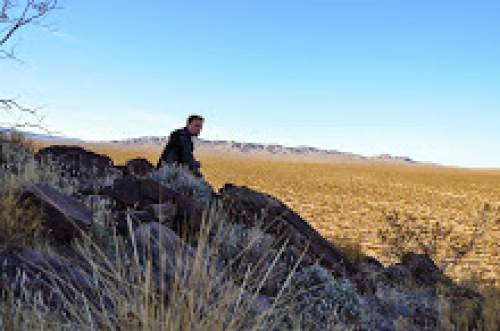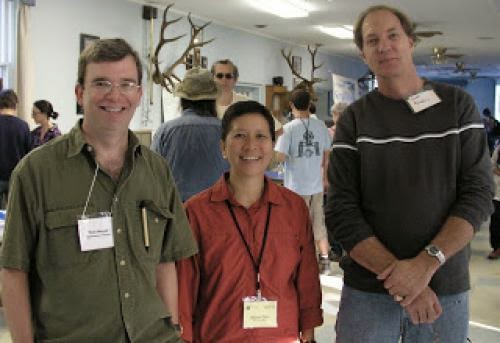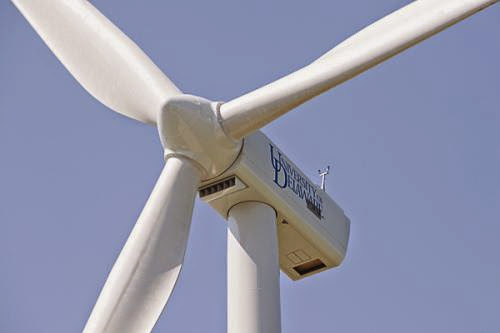Household size The number of people living in your home and your water consumption patterns Household size The number of people living in your home and your water consumption patterns Of the many different types of Solar water heaterson the market, the best hot water system for your home will depend on your situation. Consider the following.
Household size The number of people living in your home and your water consumption patterns (ie whether you all shower at the same time of day; run the dishwasher, washing machine and bath at the same time) will determine the size of the system you need and help to identify the best system and energy source for your needs.
Cost The purchase cost and operating costs of your hot water system both need to be considered. The energy used by your water heater will impact on your energy bill for years to come so consider carefully before buying.
Government rebates are also available on some energy efficient systems.
Space available In existing homes it may not be possible to install some systems due to lack of space or a difficult layout.
Existing water heater Some existing hot water systems can be easily converted to more sustainable types. For example, the best replacement for the old style ceiling mounted gravity service is often a roof-mounted solar system, as plumbing usually requires minimal alteration.
Available energy sources Your choice may also be limited by the available energy sources. Natural gas is not available in some areas and solar energy may not be ideal in cooler climates or shaded areas.
The energy source of a hot water system has a large impact on greenhouse gas emissions. Natural gas hot water systems typically generate fewer greenhouse gas emissions than electric storage hot water systems and solar hot water systems can generate even fewer greenhouse gas emissions.
Local climate Sunny locations with good solar radiation allow solar hot water systems to operate most effectively. In warm climates there is also less energy needed to raise the temperature of the water storage tanks if they are located outside, as the difference between the air temperature and the temperature of the hot water is smaller.
The amount of emissions generated by your hot water system depend on:
Greenhouse intensity of the energy source.
Age and efficiency of the hot water appliance.
Amount of solar radiation available for solar hot water systems.
Amount of heat available in the ambient air for heat pump hot water systems.
Heat lost by hot water storage tanks to the outside air.
Volume of hot water consumed.
The following recommendations can be used to minimise greenhouse gas emissions:
Where gas is available and solar access is good, a gas boosted solar water heater will generate the lowest greenhouse gas emissions.
Where gas is available but solar access is poor, an instantaneous gas system or electric heat pump is usually the best option for small to medium households.
For large households (5 people or more), a gas storage system gives similar performance to an instantaneous gas system at lower cost.
Where gas is not available an electric-boosted solar system or an electric heat pump will minimise emissions.
For multi-residential developments, a large, cost-effective solar water heater can be effectively combined with instantaneous gas boosters in each unit, or a geothermal heat pump could be cost-effective for blocks of five or more units.
About 30 per cent of the energy used to heat water in a storage system is wasted due to heat loss from the tank and associated pipework. This can be reduced through careful design and installation.
Floorplan of water heater siting in relation to use
Keep hot water pipes as short as possible to minimise heat loss. In new or renovated homes, locate wet areas close together with the water heater close to all points of hot water use. If this is not possible, locate it close to the kitchen where small, frequent amounts of hot water are used. Another alternative is to install a water recirculation system. These systems are generally compatible with any hot water system type. They recirculate water in the pipes until hot water is detected, to avoid wastage.
Estimate your hot water needs accurately to ensure your system is not oversized or undersized for your household. If storage system tanks are too small for the number of people in the house hot water can run out. If the tank is too large, operating costs will be excessive.
Storage systems lose heat through the tank walls. Reduce heat loss from electric hot water heaters by wrapping the tank with an insulation blanket. Insulation blankets are unsuitable for gas storage systems.
Insulate hot water pipes, particularly externally exposed pipe leading from the water heater to the house and the pipe leading to the relief valve (on storage systems). Note: Standard green lagged hot water pipes are inadequate for external protection in cold and cool temperate climates. Apply additional insulation or lagging'. At least 10mm of foam insulation is needed
The tempering valve, required to limit hot water to 50^0C to prevent scolding, should be located as close as possible to the tank to minimise pipe heat losses. Be sure to comply with your state or territory government requirements.
For storage systems consider installing a timer to ensure water is not heated when it's not needed, and a switch so the system can be turned off when you go on holiday.
Design new homes with a roof pitch and orientation suitable for a solar water heater. You may not want to install one now but it leaves the option open for the future. A north-facing roof with a pitch of between 22^0 and 40^0 is usually adequate.
A hot water supply system must be designed and installed in accordance with Section 8 of AS/NZS 3500.4:2003 Heated Water Services (including amendment 1) or clause 3.38 of AS/NZS 3500.5:2000 (including amendments 1,2 and 3). A solar hot water supply system located in climate zones 1,2 and 3 is exempted from complying with the above mentioned requirements. For further information please refer to the Building Code of Australia (BCA) Volume Two, Part 3.12.5.
Reducing your use of hot water is a great way to save on your energy bills, regardless of what type of water heater you have.
Showering uses the most hot water in a household. Installing a water efficient (3-star) showerhead can reduce this use by about half. If you have an instantaneous water heater, make sure that your water efficient showerhead is compatible and does not reduce flow excessively. Check with the manufacturer of your heater.
Use a shower time to remind everyone in the household to save water.
Buy washing machines and dishwashers that have a cold or warm water or economy cycle option and use these cycles as much as possible.
Immediately repair dripping hot water taps and leaking appliances, including the relief valve from your water heater.
Ensure that the thermostat on storage hot water systems is set at 60^0C. A higher temperature than this means that energy is used unnecessarily and a lower temperature than this may allow harmful bacteria to thrive. Instantaneous hot water systems should be set to no more than 50^0C.
Turn off your water heater when you go on holidays.
Maintain your system and have it serviced according to manufacturer's instructions.
Installing a solar water heater can greatly reduce your energy bills as it will use energy from the sun to heat water at zero cost.
Using solar energy to heat water produces no harmful greenhouse gas emissions. A solar water heater can provide up to 90 per cent of your total hot water requirements, depending on the climate and the model of heater.
The upfront cost of a solar water heater (including installation) is higher than electric or gas water heaters. Government rebates are available from the Australian Government and several State Governments to assist with the initial purchase cost of a solar water heater.
Although the initial cost of a solar water heater is higher, it can save energy and reduce your bills. The time required to break even (the payback period) depends on the climate, the type of system installed and the energy tariff applied. Solar water heaters have additional benefits, as they last longer than conventional water heaters and add to the value of your home.
Household size The number of people living in your home and your water consumption patterns (ie whether you all shower at the same time of day; run the dishwasher, washing machine and bath at the same time) will determine the size of the system you need and help to identify the best system and energy source for your needs.
Cost The purchase cost and operating costs of your hot water system both need to be considered. The energy used by your water heater will impact on your energy bill for years to come so consider carefully before buying.
Government rebates are also available on some energy efficient systems.
Space available In existing homes it may not be possible to install some systems due to lack of space or a difficult layout.
Existing water heater Some existing hot water systems can be easily converted to more sustainable types. For example, the best replacement for the old style ceiling mounted gravity service is often a roof-mounted solar system, as plumbing usually requires minimal alteration.
Available energy sources Your choice may also be limited by the available energy sources. Natural gas is not available in some areas and solar energy may not be ideal in cooler climates or shaded areas.
The energy source of a hot water system has a large impact on greenhouse gas emissions. Natural gas hot water systems typically generate fewer greenhouse gas emissions than electric storage hot water systems and solar hot water systems can generate even fewer greenhouse gas emissions.
Local climate Sunny locations with good solar radiation allow solar hot water systems to operate most effectively. In warm climates there is also less energy needed to raise the temperature of the water storage tanks if they are located outside, as the difference between the air temperature and the temperature of the hot water is smaller.
The amount of emissions generated by your hot water system depend on:
Greenhouse intensity of the energy source.
Age and efficiency of the hot water appliance.
Amount of solar radiation available for solar hot water systems.
Amount of heat available in the ambient air for heat pump hot water systems.
Heat lost by hot water storage tanks to the outside air.
Volume of hot water consumed.
The following recommendations can be used to minimise greenhouse gas emissions:
Where gas is available and solar access is good, a gas boosted solar water heater will generate the lowest greenhouse gas emissions.
Where gas is available but solar access is poor, an instantaneous gas system or electric heat pump is usually the best option for small to medium households.
For large households (5 people or more), a gas storage system gives similar performance to an instantaneous gas system at lower cost.
Where gas is not available an electric-boosted solar system or an electric heat pump will minimise emissions.
For multi-residential developments, a large, cost-effective solar water heater can be effectively combined with instantaneous gas boosters in each unit, or a geothermal heat pump could be cost-effective for blocks of five or more units.
About 30 per cent of the energy used to heat water in a storage system is wasted due to heat loss from the tank and associated pipework. This can be reduced through careful design and installation.
Floorplan of water heater siting in relation to use
Keep hot water pipes as short as possible to minimise heat loss. In new or renovated homes, locate wet areas close together with the water heater close to all points of hot water use. If this is not possible, locate it close to the kitchen where small, frequent amounts of hot water are used. Another alternative is to install a water recirculation system. These systems are generally compatible with any hot water system type. They recirculate water in the pipes until hot water is detected, to avoid wastage.
Estimate your hot water needs accurately to ensure your system is not oversized or undersized for your household. If storage system tanks are too small for the number of people in the house hot water can run out. If the tank is too large, operating costs will be excessive.
Storage systems lose heat through the tank walls. Reduce heat loss from electric hot water heaters by wrapping the tank with an insulation blanket. Insulation blankets are unsuitable for gas storage systems.
Insulate hot water pipes, particularly externally exposed pipe leading from the water heater to the house and the pipe leading to the relief valve (on storage systems). Note: Standard green lagged hot water pipes are inadequate for external protection in cold and cool temperate climates. Apply additional insulation or lagging'. At least 10mm of foam insulation is needed
The tempering valve, required to limit hot water to 50^0C to prevent scolding, should be located as close as possible to the tank to minimise pipe heat losses. Be sure to comply with your state or territory government requirements.
For storage systems consider installing a timer to ensure water is not heated when it's not needed, and a switch so the system can be turned off when you go on holiday.
Design new homes with a roof pitch and orientation suitable for a solar water heater. You may not want to install one now but it leaves the option open for the future. A north-facing roof with a pitch of between 22^0 and 40^0 is usually adequate.
A hot water supply system must be designed and installed in accordance with Section 8 of AS/NZS 3500.4:2003 Heated Water Services (including amendment 1) or clause 3.38 of AS/NZS 3500.5:2000 (including amendments 1,2 and 3). A solar hot water supply system located in climate zones 1,2 and 3 is exempted from complying with the above mentioned requirements. For further information please refer to the Building Code of Australia (BCA) Volume Two, Part 3.12.5.
Reducing your use of hot water is a great way to save on your energy bills, regardless of what type of water heater you have.
Showering uses the most hot water in a household. Installing a water efficient (3-star) showerhead can reduce this use by about half. If you have an instantaneous water heater, make sure that your water efficient showerhead is compatible and does not reduce flow excessively. Check with the manufacturer of your heater.
Use a shower time to remind everyone in the household to save water.
Buy washing machines and dishwashers that have a cold or warm water or economy cycle option and use these cycles as much as possible.
Immediately repair dripping hot water taps and leaking appliances, including the relief valve from your water heater.
Ensure that the thermostat on storage hot water systems is set at 60^0C. A higher temperature than this means that energy is used unnecessarily and a lower temperature than this may allow harmful bacteria to thrive. Instantaneous hot water systems should be set to no more than 50^0C.
Turn off your water heater when you go on holidays.
Maintain your system and have it serviced according to manufacturer's instructions.
Installing a solar water heater can greatly reduce your energy bills as it will use energy from the sun to heat water at zero cost.
Using solar energy to heat water produces no harmful greenhouse gas emissions. A solar water heater can provide up to 90 per cent of your total hot water requirements, depending on the climate and the model of heater.
The upfront cost of a solar water heater (including installation) is higher than electric or gas water heaters. Government rebates are available from the Australian Government and several State Governments to assist with the initial purchase cost of a solar water heater.
Although the initial cost of a solar water heater is higher, it can save energy and reduce your bills. The time required to break even (the payback period) depends on the climate, the type of system installed and the energy tariff applied. Solar water heaters have additional benefits, as they last longer than conventional water heaters and add to the value of your home.

















